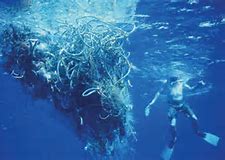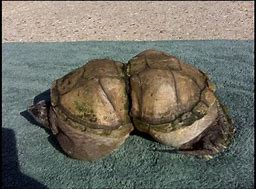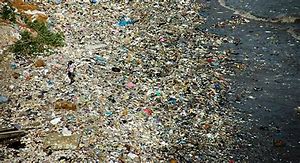We have known for a long time that plastic is bad. Not only for the environment but also for our health and the health of the fish and the overall ocean. Coming from a poorer area myself, it is not uncommon for us to see plastic bags, cups and bottles littered on every street corner.

Its in our ditches, our front yards, our lakes, parks and grocery store parking lots. In fact its everywhere. But the places that it accumulates even more is in our oceans, and what is scary about that is, not everyone is seeing just HOW bad it is.
Most of us have gotten so used to hearing about the plastic problem that we have come accustom to just ignoring the news channels, links and pictures that we see on the media. Its not old news, but what is strikingly upsetting about this is how have we convinced ourselves that this is okay and that somehow we can just ignore it? Everyone likes to see everyone else making a difference but no one wants to change themselves. We have all been guilty of this at some point in our lives, but maybe its because most of us don’t even know the severity of our situation.

Don’t ignore it because it hurts you or scares you, because that’s good, its what we need to motivate us to change, and don’t turn a blind eye because its the same old story, because clearly you haven’t read through it in the past because if you did you would know just how important it is that we pay attention and take action.
So let me share with you some of the information I have accumulated within the past couple of days…

The Great Pacific Garbage Patch is described as an island of floating trash and plastic located east of California and North of Hawaii. It is one of the biggest of the FIVE garbage patches in the ocean. Yes, you read that right. So there is not just one patch but there are FIVE. The Great Pacific Garbage Patch is the size of Eastern Australia and twice the size of Texas! These patches accumulate by the trash collected in many rivers, it then travels its way down through streams and bodies of water and then out to the ocean where the earths rotation causes the plastic to collect it certain parts of the ocean. Plastic that is often thrown away in America can make its way to Antarctica and through the coastal waters where it then collects in patches due to the earths rotation.

It is estimated that about 1,500 plastic bottles are spilled into the ocean every second, 300 million TONS of plastic is made a year which includes about 5 Billion plastic bags and billions of plastic bottles. This is an unimaginable rate of plastic being produced every single day and on top of that there is about the equivalent of one large garbage truck dumping into the ocean every minute of every day and the worst part about it, the production of plastic is expected to triple by the year 2050 if we continue the way were going.

So why is it so important that we come to understand how detrimental it is to spill waste into the ocean?
Our Marine life and the entire ocean is at stake. Plastic has found its way into the bellies of turtles, fish large and small, whales and all sorts of birds. The record amount of plastic found in a 90 day old chicks belly was 276 pieces, that makes up about 15% of that birds body weight. That is the equivalent of a human eating 13-17 pounds of food, or 12 pizzas. It is estimated that about 90% of all seabirds have swallowed plastic and some time in their lives which is a sad and frightening truth. A Brutus whale was found with 6 square meters of plastic sheeting and died of malnutrition and small micro plastics were found in tiny “lantern fish”. By 2050 it is estimated that there will be as much plastic in the ocean as fish by weight and at the moment there are estimated 5 trillion pieces of plastic in the ocean and growing. So its no shy argument that not only is the accumulation of garbage in the ocean a problem alone, but its a very frightening reality for the marine life and their livelihood as well.

Not only is the plastic accumulation a problem, but the chemicals that are in the plastic are leaching into our waters and poisoning the fish and even us! If you like to eat fish, this concerns you at the most. When a fish eats bits of plastic, the chemicals such as BPA, and Phthalates concentrates in the muscles of the fish which we then consume. BPA and Phthalates are chemicals that are found in many household products, lotions, face washes, shampoos and plastics. They are known to wreak havoc on the endocrine system which is in charge of the function of our metabolism, hormones and other bodily functions. Phthalates have been linked to testicular cancer, fertility issues, asthma, ADHD, breast cancer, neurodevelopmental issues, and other behavioral issues. BPA has also been linked to many of the above issues as well as a few more to list. The accumulation of these plastics on islands and poorer countries is causing the people of those countries to become very sick and ill as their water, land and food is polluted.

So its obvious that plastic is no good for anyone or anything, so what can we do to help reduce this waste and help the issues at stance.
- Eat Fresher food- Food such as fresh fruits and veggies can help reduce the amount of processed foods we purchase in plastic bags. Plus you can be a lot healthier by including these better foods into your diet.
- Cooking meals at home- By cooking meals at home you are reducing your waste from fast food plastic cups and silverware and restaurant plastic waste.
- Use Recycled Bags at the store- When you bring your own grocery bags to the store you can use them over and over again and not have to worry about contributing to the production of plastic bags for the grocery stores.
- Use Bio-degradable diapers or cloth diapers- By doing this you can ensure that you can take the steps of waste reduction by either using cloth diapers or using a diaper that will break down in less time then it takes for plastic to break down.
- Support business who are using biodegradable and recycled plastics- the rise of recycled plastics and biodegradable plant based plastics are being used in new restaurants to help reduce the waste.
- Support businesses that use recycled clothing and materials- There are a lot of clothing companies, toy companies and common good companies that are using recycled plastics to help reduce the addition of plastic in the landfill.
- Reusing plastic bottles and bags- If you have to purchase something plastic, purchase a reusable cup so this way its not just going right to the dump after one use.
- Drinking tap water- if you have clean tap water, you can start to reduce your plastic bottle waste by drinking the tap water with lemon, lime or even infused with other fruits and veggies. If your unsure of the quality of water, there are many companies that will come and test your water for free and help see it fit if you need to invest in a filter.
- RECYCLE- last and most importantly, recycle! It is shown statistically that only a fraction of the plastic we use everyday is being recycled in homes. If more of us recycled less of it would go to the oceans and landfills.
- Compost- food scraps make up about more than half of the garbage fill in plastic trash bags. Worse yet, food doesn’t breakdown in trashbags. If we can reduce the amount of bags were filling with food. We can reduce the plastic trash bag use.
There are so many ways we can help with the reduction of plastic use, and for the sake of our children and our children’s children and so on, we need to start taking action. What sort of lives to we want to see fit for our children. Do we want them to flourish in nature without waste, toxins and pollution? Do we want them to be able to experience marine life and a clean ocean? Or do we care that they be consistently poisoned by the environment we live in? Because that is what is happening now, and if we make simple changes in our every day lives we can make a difference.

In Haiti they have a plastic bank where recycled goods can be exchanged for cash and cell phone charging and in other countries working to clean up their beaches and environments they have work trades where their people are working to clean up their land for the better of their lives.
These are a few companies below that are making materials of recycled goods to help reduce the waste on earth and in our oceans:
- Green Toys- This company makes children’s toys made of recycled plastic milk jugs.
- Method Soaps- Their bottles made of 100% post consumer plastics found and recovered from the ocean
- RAW for the oceans-A clothing company creating jeans, shirts and hoodies made partially from plastic recovered from the ocean
- Aladdin- These double insulated cups are made from re-useable recycled plastic to help you carry around your favorite drinks wherever you go.
There are many other companies you can look out for that are doing their part to reduce waste in the world. All it takes is a lifestyle change and a passion to help the world!

